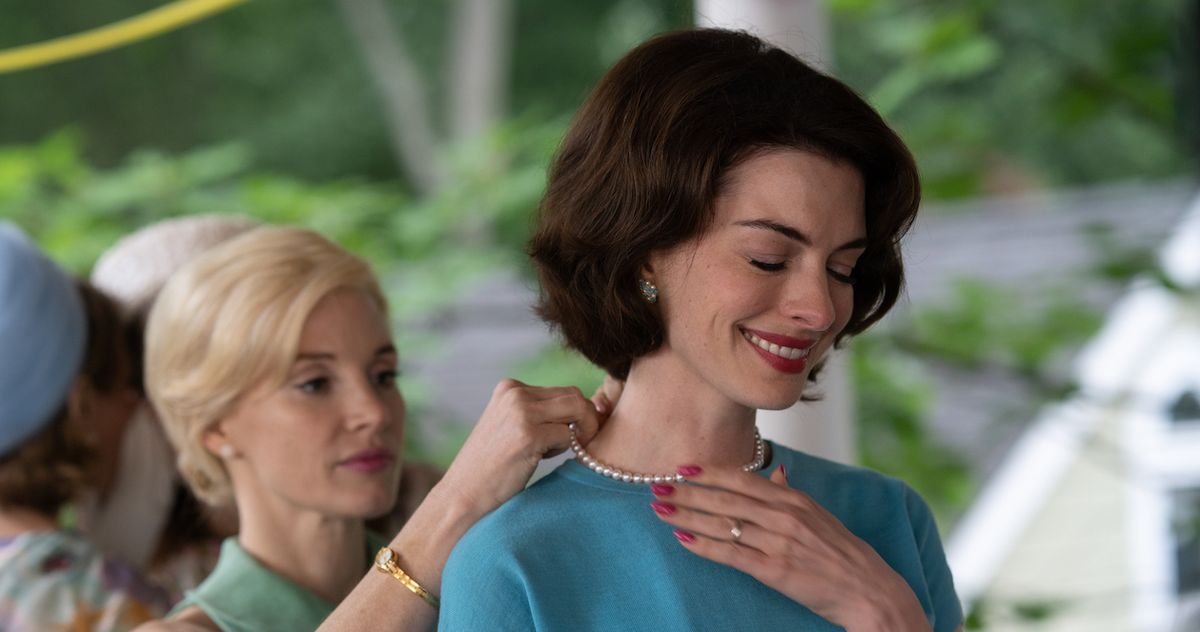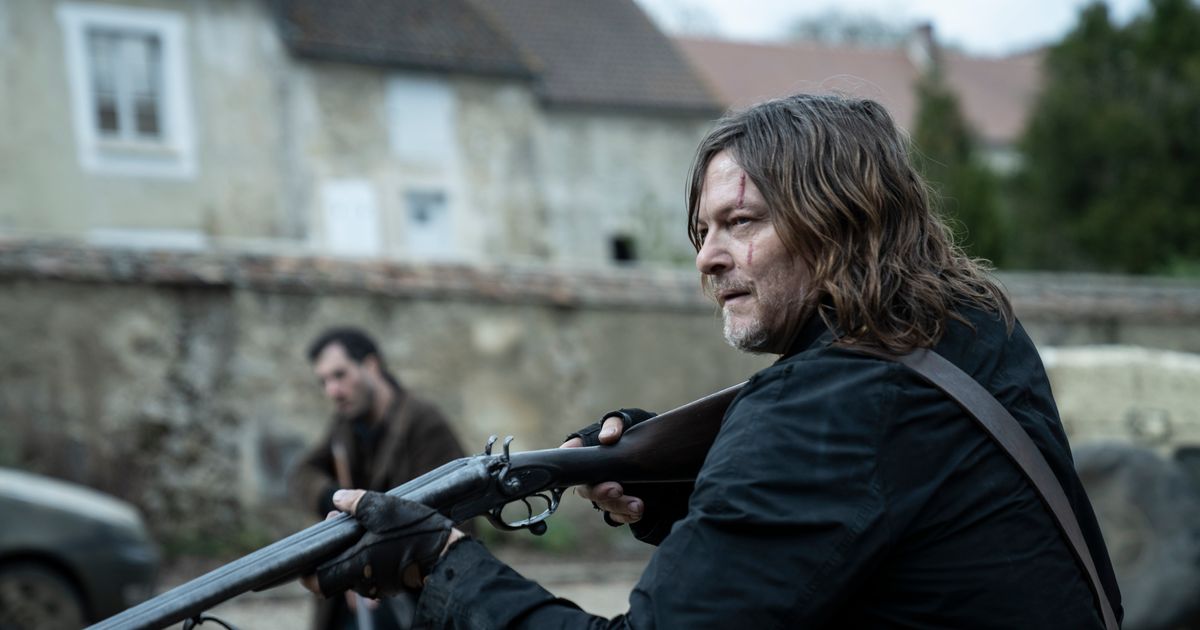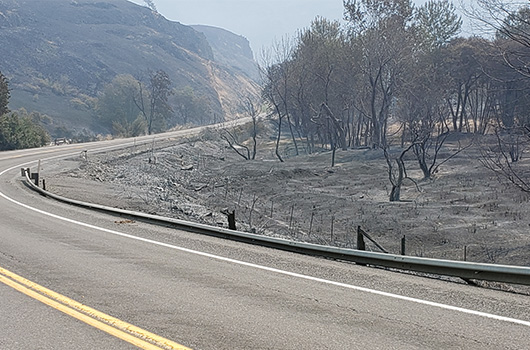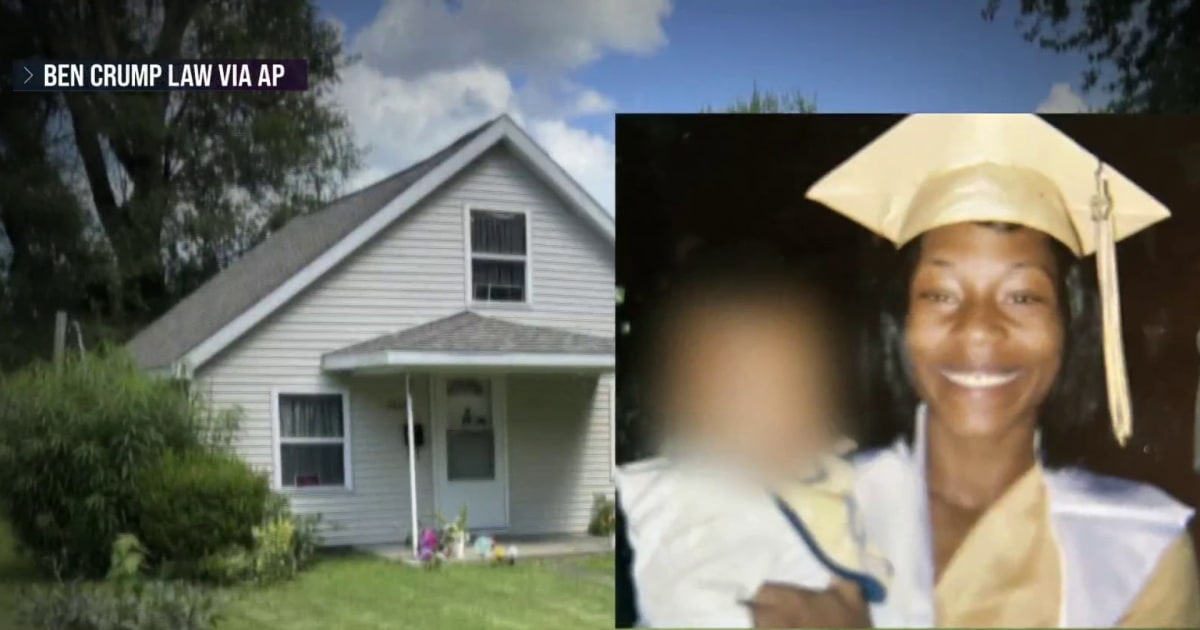Movie Reviews
Civil War Isn’t the Movie You Think It Is

Kirsten Dunst and Cailee Spaeny in Civil War.
Photo: Murray Close
/A24
Americans sure do love to see their institutions destroyed onscreen. I remember back when it was sorta-kinda news that audiences applauded and cheered as aliens blew up the White House in Roland Emmerich’s Independence Day (1996). Since then, it’s been standard operating practice for blockbusters, particularly the disaster-y ones, to incinerate or otherwise defile a monument or an iconic government building. (We took a brief recess after 9/11 — “too soon,” etc. — but went right back to it once the cultural all-clear sounded.) Maybe because our institutions were deemed so secure and unchanging for so long, the idea that they might be ravaged by aliens, meteors, zombies, or Dylan McDermott became a naughty fantasy we were eager to see played out onscreen, over and over and over again. A variation on this kind of chaos has become all too real over the past few years, with more than 40 percent of the country in a 2022 poll saying they think a civil war is likely within the next decade. I’m not entirely convinced that the constant barrage of apocalyptic destruction on our screens is unrelated. We’ve been spectators to the fantasy for so long that we’ve come to imagine we’re participants in it.
Here’s another truth about repeatedly indulging in our fantasies: We become desensitized to them. What makes Alex Garland’s Civil War so diabolically clever is the way that it both revels in and abhors our fascination with the idea of America as a battlefield. No real monuments get done blowed up real good in this one. The spectacle this time is coyer but somehow all-consuming. What’s being incinerated in Civil War is the American idea itself.
The film is set in what appears to be the present, but in this version of the present a combination of strongman tactics and secessionist movements have fractured the United States into multiple armed, politically unspecified factions. The president (Nick Offerman), we’re told, has refused to give up power and is now serving his third term; he’s dissolved the FBI, bombed American cities, and made a point of killing journalists on sight, or so we’re told. California and Texas have joined forces and become something called the Western Front. There’s also the so-called Florida Alliance. Smoke rises from the cities; the highways are filled with walls of wrecked cars; suicide bombers dive into crowds lined up for water rations; death squads, snipers, and mass graves dot the countryside.
How we got here, or what these people are fighting over, is mostly meaningless to Kirsten Dunst’s Lee and Wagner Moura’s Joel, two war journalists making the treacherous drive from New York City to Washington, D.C., for an exclusive, probably dangerous interview with the beleaguered president. Tagging along for the ride in their van are Jessie, played by Cailee Spaeny, a young, inexperienced photographer who aspires to a career like Lee’s, and Sammy (Stephen McKinley Henderson), an aging reporter who wants to go to the front lines in Charlottesville. Lee is vexed by both their presences. Jessie’s too young, and Sammy’s too old. The blood-soaked highways of the divided states of America are no place for either of them.
The journalists covering this war gather in hotel bars, get drunk, and loudly yuk it up with the jacked-up bonhomie we might recognize from movies set in foreign lands like The Killing Fields, Under Fire, and Salvador. They’re mostly numb to the horrors they’re chronicling. After the young Jessie is scarred by an early run-in with a man who threatens to shoot two unarmed, tortured, barely alive captives, Lee tells her that it’s not their job to ask questions or get involved: “We take pictures so others can ask these questions.”
One of the reasons Lee is such a legend in her field is because she has grown a protective shell around herself. She wants to get the picture. That’s it. She’s protective of Jessie but only to the extent that the girl will slow them down or upend their plans. “Would you photograph that moment, if I got shot?” Jessie asks. “What do you think?” Lee responds, as if the answer is obviously yes. But we also understand that Lee bears the psychological scars of what she’s seen. At night, alone in her bath at a hotel, she covers her eyes and revisits the horrors she’s photographed all over the world. “I thought I was sending a message home: Don’t do this,” she says of her earlier work. “But here we are.” Garland can be clunky and obvious with his dialogue, but Dunst can also make just about any line sound true. Her face tells one story, her words tell another; together, they bring this conflicted woman to life.
The film embodies Lee’s traumatized numbness to a degree. Garland knows how to build suspense, and he depicts astonishing violence with the requisite horror, but he also moves his film along in playfully provocative ways. After one ghastly sequence in which guerrillas shoot a weeping soldier, the director cuts to a montage set to De La Soul’s “Say No Go,” a song about a horrific subject that adds a peppy beat to the grisly images onscreen. (I was reminded of the way Stanley Kubrick’s Full Metal Jacket cut to the Trashmen’s “Surfin’ Bird” right after a similar firefight.)
Even the film’s episodic quality — it’s really just a ghastly travelogue through the war-torn Eastern Seaboard, with our protagonists confronted at each stop with some upsetting new incident — feels like a provocation. Part of shutting yourself off to such horrors involves being able to move past them, and Civil War, like its characters, glides past each monstrous vignette with unbothered brio. This can make the film feel weirdly weightless at times. Its characters are observers and nomads. If anything, they feel less invested in what they’re witnessing as the movie goes on.
Civil War’s lack of a political point of view, as well as its refusal to really identify the positions of its warring parties, has come in for some understandable criticism. But does any sane person really want a version of this film that attempts to spell out these people’s politics or, even worse, takes sides in its fictional conflict? (That sounds like it would be the worst movie ever made.) Garland does include flashes of real news footage from a variety of recent American disturbances, but he’s clearly done more research into media depictions of other countries’ war zones.
This is maybe his best idea, and why the film’s lack of political context feels more pointed than spineless: The conceit here is to depict Americans acting the way we’ve seen people act in other international conflicts, be it Vietnam or Lebanon or the former Yugoslavia or Iraq or Gaza or … well, the list goes on. In that sense, Civil War winds up becoming a movie about itself. Beyond the plausibility of war in the United States or the tragedy of such an eventuality, it’s about the way we refuse to let images from wars like this get to us. It’s more a call for reflection, an attempt to put us in the shoes of others, than a warning — not an It Can Happen Here movie, but a Here’s What It’s Like movie. It doesn’t want to make us feel so much as it wants us to ask why we don’t feel anything.
See All

Movie Reviews
What If Jessica Chastain and Anne Hathaway Had a Mother-Off, and We All Lost?

The strange case of Mothers’ Instinct.
Photo: Neon
There’s a new movie starring Jessica Chastain and Anne Hathaway out this week, which is normally the sort of thing you’d expect to have heard about. But, after its release in the U.K. months ago, Mothers’ Instinct is slipping into U.S. theaters with as little splash as an Olympic diver nailing a triple somersault tuck. The film, a thriller directed by Benoît Delhomme, is getting the treatment typically reserved for a disaster, which is a shame, because I’ve been dying to discuss it with someone, and that’s hard when no one has any idea what you’re on about. Mothers’ Instinct is, indeed, pretty terrible, and not in the so-bad-it’s-good sense, and yet there’s something strangely moving about it. It’s a poignant example of how what looks like rich material to actors can turn out to be lousy material for audiences. Mothers’ Instinct is a remake of a 2018 Belgian film adapted from a novel by Barbara Abel, and watching it, you can appreciate exactly why these two major actors signed on to star in it. Funnily enough, those same qualities go a long way toward explaining why the movie doesn’t work.
Mothers’ Instinct isn’t camp, but it’s close enough that if you squint, you can almost see a version of the film that tips into something broader. Of course, if you squint, you wouldn’t be able to appreciate how immaculately Chastain and Hathaway are costumed. They look incredible — not like two 1960s housewives, which is what they’re playing, so much as two people who keep switching outfits because they can’t decide what to wear to the high-end Mad Men–themed party they’re headed to later. As Alice, Chastain is styled like a Hitchcock blonde in pin-curled ash updos and cardigan sets, while as Alice’s neighbor and friend Céline, Hathaway is given a Jackie O. look that involves a shoulder-length bouffant, pillbox hats, and gloves. They’re cosplayers in a gorgeous, airless setting, adjoining houses on a street that might as well be floating in space, the husbands (played by Anders Danielsen Lie and Josh Charles) vanishing to work for long stretches. The artificiality of this intensely manicured re-creation isn’t to any particular end, which gives the whole movie the air of a Don’t Worry Darling situation in which no one ever wakes up to the twist, instead sleepwalking through a stylized dream of Americana.
In fact, while Alice is restless over having given up her job as a journalist to take care of her son Theo (Eamon O’Connell), and Céline gets ostracized by the community after the death of her son, Max (Baylen D. Bielitz), Mothers’ Instinct isn’t actually all that interested in the pressures of living under a repressive 1960s patriarchy. Instead, it’s about another time-tested theme, one that’s best summed up as: Bitches be crazy. The perfect sheen of its surfaces — Delhomme, who’s making his directorial debut, is a cinematographer who started his career with The Scent of Green Papaya and has since worked with everyone from Tsai Ming-liang to Anton Corbijn — is paired with a score that shrieks unease from the opening scene, in which Céline is thrown a surprise birthday party. The source of this suspense isn’t revealed until later, after Max takes an unintended swan dive off the porch and the women’s friendship is threatened by grief, guilt, and suspicion. Is Céline in mourning, or does she actually irrationally blame Alice for what happened while developing an alarming fixation on Theo? Is Alice right to be suspicious of her bestie, who’s unable to have another baby, or is she being paranoid because the mental illness that previously resulted in her hospitalization has returned? Is it odd that two feminist actors jumped to participate in a film that traffics so freely in unexamined stereotypes about women and hysteria?
Not, it seems, when the opportunities to stare coldly into space or look on in glassy betrayal are this good. I’m not trying to sound snide here — the characters in Mothers’ Instinct have no convincing inner lives at all, but the exterior work of the actors playing them is choice stuff. When Alice and Céline are getting along, Chastain and Hathaway nuzzle together supportively like long-necked swans. When things start to go south, Chastain opts for an aloof distance with stricken eyes, while Hathaway prefers a labored smile that drops as soon as she’s alone. Theirs is a brittle-off no one can win, but both try their hardest anyway. The effort reaches its crescendo at Max’s funeral, where Hathaway’s enormous eyes glimmer through the barrier of a black lace veil and Chastain tilts her face up so that the elegant tracks of past tears can gleam in the light. The scene ends with Céline collapsing in anguish while Alice rushes her tantrumming child out of the church, an explosion of drama that would be so much more effective if the movie had left any room for modulation instead of starting at 10 and staying there. Mothers’ Instinct gets much sillier before it ends, but given how little it establishes as its baseline tone, it doesn’t feel fair to say it goes off the rails. Rather, as Hathaway stares brokenly into the dark and Chastain tears apart her nightstand drawer in panic, what comes to mind is how great a set of GIFs this movie will make someday. That’s not much, but I guess it’s something?
See All
Movie Reviews
Movie Review: Twisters – Kenbridge Victoria Dispatch

Movie Review: Twisters
Published 11:15 am Friday, July 26, 2024
1 of 3
Let me immediately cut to the chase (pun intended) and answer the question you’re all wondering. TWISTERS is a fun and entertaining summer blockbuster, but it in no way holds a candle to its predecessor TWISTER (1996). Still, the CGI is intense, the sound design is loud and immersive, and the lead performances — especially from Glen Powell — are sure to wow.
Following a horrible tragedy, meteorologist Kate Carter (Daisy Edgar-Jones) has spent years out of the storm chasing business. She now lives in the largely tornado-less New York City, using her innate understanding of storm systems to direct weather alerts. But when her old friend Javi (Anthony Ramos) begs her to join his privately-funded start-up, which is designed to use military-grade radars to learn more about tornadoes and save communities in Oklahoma, she agrees to give him a week of her time. It’s not too long before “tornado wrangler” influencer Tyler Owens (Glen Powell) enters the scene with his ragtag group of weather enthusiasts, creating a competition between scientific research and entertainment. Each group races to be the first on the scene, with Kate and Javi seeking to model the tornado and Tyler trying to get the most likes on social media. But can the two groups find a way to work together or will the competition be more vicious than the tornadoes?
I am admittedly judging myself for caring too much about a summer blockbuster’s plot, because that’s not really what any of us sign up for with these films. But the various encounters with tornadoes begins to feel slightly repetitive and creates pacing issues, making a two-hour film feel like its runtime. And for some reason, it seems like there is something missing when it comes to portraying the sheer terror of experiencing F5 tornadoes, unlike the original film; the main set pieces were not as memorable.
The film does little to make you care about whether the characters live or die, relying on Glen Powell and Daisy Edgar-Jones’s chemistry and natural charisma to do the heavy lifting. The second Powell steps out of his gigantic truck, with his cowboy hat and belt buckle sparkling in the sun… sorry, I just lost my train of thought… and that’s what TWISTERS is hoping. Powell’s magnetism is sure to knock you off your feet and distract you from the film’s middling plot. And while Edgar-Jones’s performance is more muted, due to her character’s battle with PTSD, she brings an important level of humanity to the film and a character to both see yourself in and root for. More than that, her chemistry with Powell is off the charts and will certainly leave you wanting their relationship explored more in a sequel. The supporting characters are not given much to work with and as such, don’t really engender much concern when they are in deadly situations.
One element of TWISTERS I liked more than TWISTER is it showed the emotional and financial toll tornadoes ravage on communities. Of course, that is an element of the first film, but TWISTERS does a great job showcasing the speed in which tornadoes can overtake and devastate a community, both in loss of life and loss of property. This, juxtaposed with the “fun” in chasing storms brings a real human element to the film. I also want to give a shoutout to the movie not having any sad animal scenes (apart from a possible run-in with a chicken). So for all of you sickos excited to see another flying cow, this isn’t for you.
TWISTERS is the exact kind of movie you need to see in a theater so you can get the full experience. Where else can you admire the cinematography, get immersed in the sound design, and lose yourself in Glen Powell’s cowboy hat and million dollar smile? I saw it in a Dolby theater and was blown away.
There is no end credit scene.
My Review: B
Movie Reviews
Raayan Telugu Movie Review, Dhanush, Sundeep Kishan

Movie Name : Raayan
Release Date : July 26, 2024
123telugu.com Rating : 2.75/5
Starring : Dhanush, Sandeep Kishan, Kalidasu Jairam, Aparna Balamurali, SJ Surya, Saravanan
Director : Dhanush
Producers : Kalanithi Maran
Music Director: A. R. Rahman
Cinematographer: Om Prakash
Editor: Prasanna GK
Related Links : Trailer
Raayan is Dhanush’s 50th film as an actor and his second as a director. The film released in cinemas worldwide today amid moderate expectations. This review explores how the film performed. Read on.
Story:
Kaartavaraayan aka Raayan (Dhanush), enjoys a quiet life in Anjanaouram with his brothers Muthuvelaraayan (Sundeep Kishan), Maanikyaraayan (Kalidas Jayaram), and sister Durga (Dushara Vijayan). Their tranquility is shattered when Muthu gets into a fight with the local don Dorai’s (Saravanan) men, setting off a dangerous rivalry. Sethuram (SJ Suryah), another gangster, steps into the fray with a deadly plan to eliminate Raayan. What drives Sethuram’s desire to kill Raayan? Who is Raayan beneath the surface? What is his true purpose? The film unveils all these secrets.
Plus Points:
Expectations were high when the film was announced, as it is directed by Dhanush. Besides his intense acting, Dhanush demonstrates his directing skills neatly.
Sundeep Kishan takes on a significant role and delivers an exceptional performance with his portrayal of a character with grey shades. His scenes with Dhanush and Aparna Balamurali are enjoyable.
Dushara Vijayan is unexpectedly strong in her role, which becomes more intense in the second half. SJ Suryah, as usual, gives an exemplary performance. Aparna Balamurali, Selvaraghavan, and others perform decently in their respective roles.
Minus Points:
The movie doesn’t offer much that’s new for viewers. Dhanush presents a routine story with very few twists, but the slow-paced screenplay diminishes the story’s impact.
There is no strong hook to illustrate the conflict between SJ Suryah and Dhanush. The reasons provided are unconvincing, and SJ Suryah’s potential is not fully utilised.
The film caters mainly to action movie enthusiasts and may not be suitable for family audiences due to its violent content.
Prakash Raj’s character lacks originality, and Varalaxmi Sarathkumar has minimal relevance to the plot. Additionally, including more emotional depth might have improved the film. The second half feels dragged out, with unnecessary scenes added to extend the film.
Technical Aspects:
As a director, writer, and actor, Dhanush displays his skills, but as a writer and director, he could have crafted a more engaging story. The sluggish second half could have been tightened.
Given the high expectations, AR Rahman’s work is noticeable but slightly disappointing. The cinematography by Om Prakash is decent, while editing by Prasanna GK could have been better. Production values are satisfactory.
Verdict:
On the whole, Raayan offers nothing new but remains passable due to the strong performances by Dhanush, Sundeep Kishan, Dushara Vijayan, and SJ Suryah. The action scenes are adequate but not suitable for family audiences. The lack of a strong hook point and a dragging second half are notable drawbacks. If you still decide to watch it, manage your expectations accordingly.
123telugu.com Rating: 2.75/5
Reviewed by 123telugu Team
Click Here For Telugu Review
Articles that might interest you:
-

 World1 week ago
World1 week agoOne dead after car crashes into restaurant in Paris
-

 Midwest1 week ago
Midwest1 week agoMichigan rep posts video response to Stephen Colbert's joke about his RNC speech: 'Touché'
-

 News1 week ago
News1 week agoVideo: Young Republicans on Why Their Party Isn’t Reaching Gen Z (And What They Can Do About It)
-

 Movie Reviews1 week ago
Movie Reviews1 week agoMovie Review: A new generation drives into the storm in rousing ‘Twisters’
-

 News1 week ago
News1 week agoIn Milwaukee, Black Voters Struggle to Find a Home With Either Party
-

 Politics1 week ago
Politics1 week agoFox News Politics: The Call is Coming from Inside the House
-

 News1 week ago
News1 week agoVideo: J.D. Vance Accepts Vice-Presidential Nomination
-

 World1 week ago
World1 week agoTrump to take RNC stage for first speech since assassination attempt




















